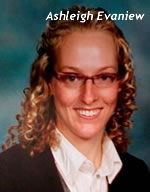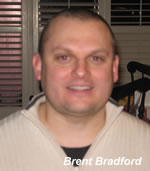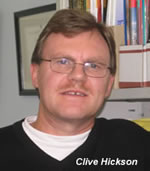ATTENTION CHILDREN, FAMILIES,
AND SCHOOL COMMUNITIES: LET'S CELEBRATE!
written by Ashleigh
Evaniew, Brent Bradford,
and Clive Hickson
This month, let us be attentive to
the word celebrate. As true advocates for physical
education, we carry out countless initiatives that promote
the importance of our subject area, often without acclamation
and recognition. Therefore, the purpose of this article is
to celebrate.
We ask you to take time out of your
busy lives to celebrate all the extraordinary activities you
do on a regular basis as effective teachers of physical education,
and to discuss three avenues to continue the celebration:
(1) celebrate the successes of our school children, (2) celebrate
children's learning with their families, and (3) create a
school community that celebrates sport and physical education.
Before exploring such avenues, it
is important to understand why celebrating sport and physical
education can be beneficial. By celebrating, we believe:
- School children will develop higher levels of self-efficacy
while becoming physical educated (Hickson & Fishburne,
2001).
- Families will continue to believe
and support physical education and sport as being critical
parts of their children's lives.
- School communities will continue
to create healthy and vibrant community members who support
school programming that promotes high quality physical
education experiences and a variety of sports opportunities
for all children.
Celebrating Success with CHILDREN As children
progress through their elementary school years, they undergo
tremendous growth and development (Fishburne, 2005). We, as
teachers of physical education, must continue to be mindful
of this developmental process. We play an important role in
helping to develop whole children (e.g., physical, emotional,
social, intellectual). As such, what elicits celebration for
one child is likely different for another child due to age,
grade, and ability level. Therefore, as we continue to discuss
children's successes, we encourage you to modify activities
to match the uniqueness and individual needs of your school
children, and find ways to celebrate the achievements of each
child according to his/her particular level.
Regardless of age, grade, and ability levels, one common
indicator of celebrating children's successes is through their
progression towards a learning objective. After all, our ultimate
goal is to help our school children obtain the knowledge,
skills, and attitudes toward becoming physically educated
individuals (Hickson, 2003). Let us encourage celebration
when children show signs of progression en route to mastering
motor skills.
- Verbal Praise and Positive Communication.
Our voices and communication styles are very important for
calling attention to positive behaviors demonstrated by
children. Being clear, communicating relevance, using humor,
showing immediacy, and listening have been found to be key
communication skills that can help support children's motivation
during class and in their daily lives (Webster, 2010). In
addition, the virtue of hearing the celebration of another
child's success may motivate other children to improve their
own behaviors and/or learning.
For example,
you could communicate the following statement, "Kelsey,
you are exploring different levels in such a creative
manner! You are doing such a great job moving from high
levels, to medium, to low. You are now at a low level.
Terrific job! Can you all see how Kelsey is exploring
the levels creatively?"
- Peer
Review. Children can collaborate in small groups.
They can learn to identify and communicate learning criteria
to each other. Peer reviewing requires a lot of teacher
planning. A classroom culture of respect and cooperation
must be established in order to produce a cooperative learning
environment. Learning criteria that is clearly discernible
and attainable can ensure success in both identification
and participation in the physical education/sport activity.
For example,
Partner One will create a movement sequence that has a
starting position, two different balances, and an ending
position. Partner Two will observe Partner One's movements.
Partner Two will then report to Partner One which body
parts acted as the base of support.
Through this
process, children will gain greater communication skills
as they critique their peers verbally in a positive manner.
That is worth celebrating!
- Personal
Goal Setting. Children should learn to praise themselves
when warranted. Instead of always relying on praise from
a teacher or a peer, school children should comprehend the
power of intrinsic
motivation. After all, it is intrinsic motivation that
we hope encourages them to live healthy, active lifestyles.
As teachers of physical education, we are in the absolute
best position to help children learn to set goals and to
stay motivated throughout the process.
For example,
one child may come up with the following goal, "My
personal goal is to work 3 minutes without stopping during
a Step-Up Station." As children continue to achieve
personal goals in physical education and in sports, we
must continue to celebrate their development!
When we celebrate goals that children
set and reach, we can sit back and say, "We helped
change their lives...and we helped them truly understand
what intrinsic motivation means!"
Celebrating Success with FAMILIES
Formal periods of assessment reporting in physical education
provide the ideal opportunity to communicate and celebrate
children's learning with their families. At times, demonstration
of learning in physical education is out-of-balance with "the
three Rs." Unlike traditional "pen and paper"
subjects that often have drafts or a final product to demonstrate
long-term growth, much of the learning in physical education
is focused towards the process of learning a motor skill.
Families deserve to be informed about their children's progress
in every subject area, including physical education, which
is the only subject that has the potential to develop both
the intellectual and physical domains (as well as social and
emotional domains) (Humphrey, 1980). We must continue to be
creative in our presentation and celebration of children's
achievements during formal reporting periods.
With the influx of technology within our schools comes the
opportunity to celebrate learning in a revolutionary way.
Only a few years ago, the idea of video-taping, editing, and
presenting children's progress in a digital format may have
been met with resistance. However, thanks in part to portable
laptops, cameras, and mobile devices equipped with a recording
function, the need for camcorders, tripods, and VHS is lessened.
- E-Portfolios. Why not create videos (Graham,
2008) and digital e-portfolios that illustrate student progress?
Once the videos are made, think of all the possibilities
for their use in celebrating sport and physical education
- not only at Demonstration of Learning nights,
but also during school assemblies, on class websites, during
classes (peer review opportunities), etc.
- PE/Sport Homework.
Smith and Claxton (2003) contend that homework involving
physical activity is one strategy to expand the physical
education curriculum in order to promote healthy, active
lifestyles. Physical education and sport encompass the cognitive,
affective, and psychomotor domains of learning. Therefore,
homework in these areas potentially addresses all three
domains (Mitchell, Barton, & Stanne, 2000).
For example,
a form of homework that can address the affective component
of physical education and sport by helping children develop
a positive attitude can include attending a sporting event
(Smith & Claxton, 2003). When children watch a sporting
event, they could be asked to draw, write, and/or speak
to a recorder about what they observe.
- Subject Integration.
Many experts in our field combine their program outcomes
skillfully with other subject areas to create authentic
cross-curricular physical activities (e.g., Orienteering
Activities with an array of Control Points that require
the skills and knowledge from other subject areas). However,
rarely is the same consideration placed on integrating physical
education and sport learning objectives into classroom-type
activities. Therefore, we would like to propose, as an additional
way to celebrate children's learning with their families,
the transferability of learning physical education and sport
skills within the "pen and paper" subject areas.
For example, combining children's
knowledge of health benefits with persuasive writing is
an excellent cross-curricular strategy to help school
children convince themselves and others to stay healthy
and physically active. A poster in art to advertise an
inventive game is another example. We must continue to
find innovative ways to help children realize that physical
education and sport is worth celebrating in the classroom!
Celebrating Success with SCHOOL COMMUNITIES
As the physical education advocate for your school community,
you are likely already promoting the importance of a healthy
and active lifestyle to your school children and colleagues.
Well done! Chances are that you are continuing to contribute
to a Comprehensive School Health Environment and enhancing
the well-being of every school community member. Let us examine
a few ideas in how we, as a community of physical educators
and sport leaders, can communicate and celebrate successes
in school communities.
- Bulletin Boards. One idea we would like
to share is proudly displaying, on a designated PE/Sport
bulletin board, your children's artwork and writing projects
on physical education and sport topics. A second option
is to display the Physical Education Program of Studies
and/or various sports rules on various bulletin boards throughout
your school environment.
- School-Wide Activities.
School-wide activities have the potential to create community
spirit, support networks, and positive energy. For example,
the organization of school-wide running clubs, fitness events,
and/or intramural programs provide children with amazing
benefits. Benefits that have been associated with school
children who participate in school-wide activities regularly
include: higher levels of self-efficacy,
greater academic performance, less disruptive behavior,
less anxiety (Medina, 2008), and an array of health benefits
(Dauenhauer & Keating, 2011).
Once children
believe they are improving their skills and experience
personal success, they may possibly wish to participate
in school sports against other schools and/or in local
events. Then, when we are out at the sports field and/or
track meet watching our school children participating
willingly in sport-type activities - is that not worth
celebrating? We think so! You are creating a school community
that believes in healthy, active lifestyles!
- School-Wide Communication.
During the morning announcements it is so nice
to see children smile when they hear their names over the
school speakers about their "big win" the night
before, or about their achieved personal goals. What about
celebrating their successes in monthly school newsletters?
Once parents read the wonderful information about their
children and others, it may help build stronger family relationships
and may even help develop healthy, active lifestyles in
their homes! Is that worth celebrating? Yes!
- School Community Evenings.
School showcase events and/or evening presentations are
usually organized to celebrate specific subject areas or
special projects. School community evenings such as musical
concerts, drama performances and/or Science Fair Exhibitions
provide a wonderful inspiration to create similar celebrations
focused on physical education and sport.
For example,
an evening that might include several stations designed
to celebrate unique motor tasks (e.g., throwing and catching,
balancing and rolling, and/or creative movement stations)
can be organized with ease. Imagine the pride and leadership
school children will exude as they educate their families
and other school community members whilst displaying high
levels of motor performance.
What about organizing
an evening where local community clubs, organizations,
and/or leagues can display their expertise in your school?
The coordinated effort may promote exposure for each particular
club, as well as informing families of potential out-of-school
opportunities to continue to stay healthy and physically
active. These are additional reasons to celebrate!
A Celebrated Summary
Physical education and sport provides children with many
benefits that last a lifetime! We must continue to celebrate
our school children's success with children, families, and
school communities. In order for school children to reach
the highest levels of achievement in physical education and
sport, we must continue to focus on celebrating their successes
so that they truly believe what they are doing is worthy of
the dedication, perseverance, and effort that they put forth
daily.
Verbal praise and positive communication, peer
review, and personal goal-setting are effective
strategies for celebrating children's successes with the children
themselves. E-portfolios, PE/sport homework,
and subject integration are advanced notions to help
celebrate children’s successes with their families.
Bulletin boards, school-wide activities,
school-wide communication, and school community
evenings are applicable approaches for celebrating children's
successes with school communities.
In closing, you have made a difference in your school children's
lives this year. Way to go! Keep up the great work and remember
- continue to CELEBRATE all the great physical education and
sport achievements that school children experience daily!
REFERENCES
(back
to pelinks4u homepage) |






